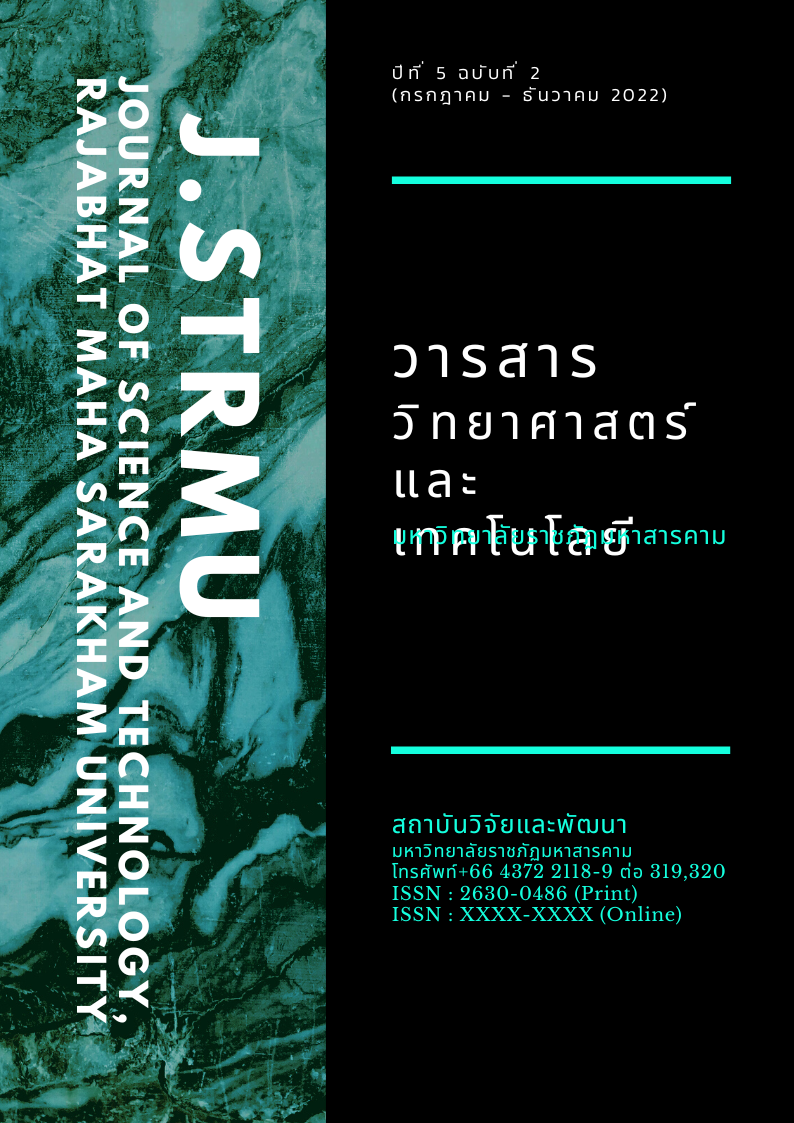development of aerated concrete with a mixture of rice straw and bamboo
Keywords:
Development, aerated concrete, rice straw, bambooAbstract
Research on the development of aerated concrete with a mixture of straw and bamboo. It is a research to study the mix rate between Portland cement. Type 1 using rice straw and bamboo Sand substitution by volume, percentage of sand weight, mixture rate Cement : Sand : (Bamboo straw ratio is the same. At the rate of 5, 10, 15, 20, 25 and TPIPL (M220B) finished cement using rice straw and bamboo, replacing sand by the percentage volume of TPIPL cement weight (M220B). Cement ingredient rate: (Same ratio of bamboo rice straw. The percentage of total TPIPL cement (M220B) at the rate of 5, 10, 15, 20, 25 and mixing each material in the specified proportions is poured into the test size 15 x 15 x 15 cm, cured with water for 28 days. 15, 20, 25 It has a higher compressive strength than the benchmark, which determines the type of aerated concrete. C16 Compressive resistance value at 51.0 MPa (kg/cm2) Aerated concrete mixed with straw and bamboo in a replacement ratio of 25% SFB5 sample Compressive resistance value of 126.67 kg/cm2 Sample MFB5 Compressive resistance value of 105.93 kg/cm2 and in the water absorption rate test, it was found that aerated concrete mixed with rice straw and bamboo substituted at the rate of 5 percent, 10, 15, 20, 25 samples tested SFB3, water absorption rate of 20.04 percent, which is in the benchmark, determines the type of aerated concrete. C12 differs from the MFB1 test sample with a water absorption rate of 35.37 percent, which is higher than the specified benchmark.
Based on the results, it can be concluded that the SFB 3 test sample, which uses a mixture of rice straw and bamboo to replace sand at a rate of 15 percent, compressive resistance value of 154.04 kg/cm2 and water absorption rate of 20.04 percent, is an appropriate formulation to make aerated concrete containing aerated concrete mixtures based on rice straw and bamboo according to which it is within the C16 aerated concrete standard TIS 2601-2556.
References
ดนุพล ตันนโยภาส และกัลยาณี คุปตานนท์. (2553). คอนกรีตมวลเบาที่ทำจากมวลรวมกะลาปาล์มน้ำมันผสมหินฝุ่นแกรนิต. วารสารมหาวิทยาลัยทักษิณ, 12(3) ตุลาคม 2552 - มกราคม 2553, 138-148.
ธนภร ทวีวุฒิ และนท แสงเทียน. (2558). กำลังรับแรงอัด และการดูดกลืนน้ำของคอนกรีตมวลเบาแบบเซลลูล่า. วารสารวิชาการ วิศวกรรมศาสตร์ ม.อบ., 8(1) (2558): มกราคม – มิถุนายน, 91-102.
นิตย์รดี ดอเล๊าะ. (2552). วัสดุมวลเบาที่ใช้ในงานอุตสาหกรรมก่อสร้าง. วารสารมหาวิทยาลัยนราธิวาสราชนครินทร์, 1(3) กันยายน-ธันวาคม, 48-62.
บุญส่ง สมเพาะ, วัลยุทธ เฟื่องวิวัฒน์, ปิยะวดี บัวจงกล และวรัญญู ราษฎร์เจริญ. (2556). คุณสมบัติของไม้ไผ่บางชนิดเพื่อการก่อสร้าง. สำนักวิจัยและพัฒนาการป่าไม้ กรมป่าไม้ กรุงเทพฯ
พระราชบัญญัติมาตรฐานผลิตภัณฑ์อุตสาหกรรม พ.ศ. 2551. (2556, 25 กันยายน). ราชกิจจานุเบกษา. เล่มที่ 130 ตอนพิเศษ 123 ง. หน้า 9.
พัชร อ่อนพรม. (2560). การใช้เถ้าแกลบแทนที่ทรายบางส่วนในคอนกรีตมวลเบา. บทความวิจัยและนวัตกรรมการศึกษา, 1(1) มกราคม – มิถุนายน, 1-15.
วรพจน์ แสงราม และสันติภาพ เข็มแก้ว. (2552). คอนกรีตมวลเบา. วารสารวิหารแดง. 1(1), มกราคม 2552 (อัดสำเนา).
สมชาย อินทะตา และชนิดา ขันคำ. (2558). การใช้ฟางข้าวเพื่อผลิตแผ่นซีเมนต์บอร์ดฉนวนกันความร้อน. (รายงานการวิจัย). มหาวิทยาลัยราชภัฏมหาสารคาม.



